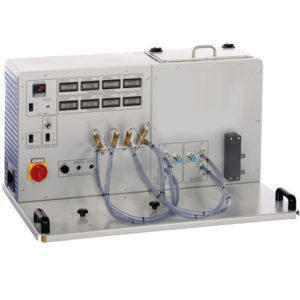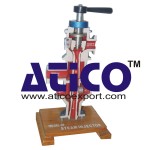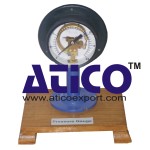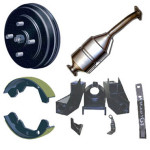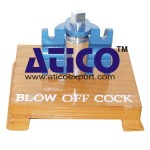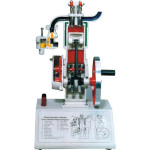Heat exchangers transfer thermal energy from the flow of one medium to another. The two flows do not come into direct contact with one another. Efficient heat transfer is a prerequisite for economical processes. Therefore, different heat exchanger types are used in practice depending on the requirements.
This experimental unit can be used to investigate and compare different heat exchanger designs. The complete experimental setup consists of two main elements: as supply and control unit and choice of heat exchanger: Tubular heat exchanger, plate heat exchanger, shell and tube heat exchanger and stirred tank with jacketed vessel and coil. Water is used as the medium.
Learning Objectives And Experiments
- In conjunction with a heat exchanger
- plotting temperature curves
- determining the mean heat transfer coefficient
- comparing different heat exchanger types
Specification
- Supply unit for heat exchangers
- Hot water circuit with tank, heater, temperature controller, pump and protection against lack of water
- Cold water circuit from laboratory mains or water chiller
- Temperature controller controls the temperature of hot water
- Flow adjustable using valves
- Digital displays for 6 temperature and 2 flow rate sensors
- Water connections with quick-release couplings
- Stirring machine connection with speed adjustment
- Functions of the software: educational software and data acquisition
Technical Data
Pump
- Power Consumption: 120W
- Max. Flow Rate: 600L/H
- Max. Head: 30m
Heater
- Power Output: 3kw
- Thermostat: 0…70°C
- Hot Water Tank: Approx. 10L
Measuring Ranges
- Temperature: 6x 0…100°C
- Flow Rate: 2x 20…250L/H
- 230V, 50Hz, 1 Phase
- 230V, 60Hz, 1 phase; 230V, 60Hz, 3 phases

